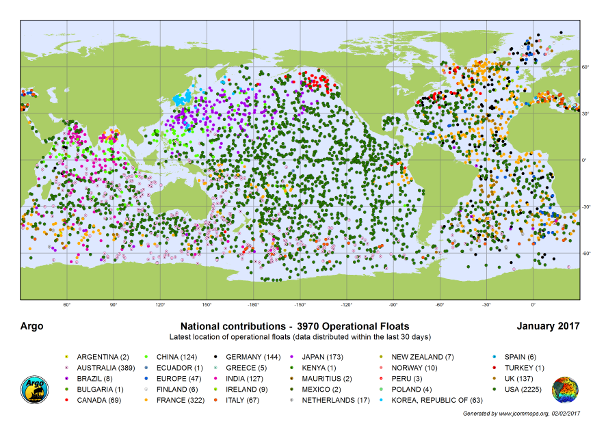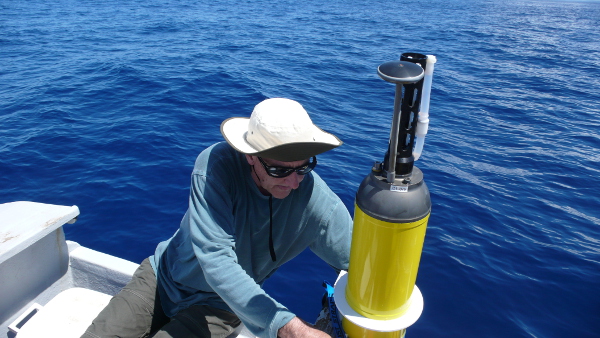As jobs go, this one surely beat them all in the multi-skilling stakes.
You need to be an electronics technician as well as being generally handy with anything mechanical to do with scientific equipment. For example? Winches, cables, underwater housings, instrument fittings and assemblies.
You need to be good at problem solving, logistics, report writing, quality control and working with volunteers.
And all that at sea, some of the time.
Not to mention, being part of the world’s quest to understand the deep ocean, working with internationally recognised scientists in world class facilities as well as the merchant shipping industry.
And what’s the job?
Advertised recently by CSIRO, it’s to play a pivotal role in two programs. One is the XBT (Expendable BathyThermograph) program dropping probes which measure temperature at varying depths, from ships that are part of the SOOP (Ship of Opportunity) Program.
The other is the Argo ocean-observing float program, continuing to add to the more than 3,900 drifting floats currently operating in the upper 2,000 meters of the world’s oceans.
The program represents millions of dollars’ worth of scientific monitoring instruments stowed inside thousands of free-drifting floats that are continually measuring, not just temperature but also salinity and the speed and direction of ocean currents.

The data they collect, however, is invaluable. The data is relayed via satellite, giving scientists the world over unprecedented access to one of the world’s most comprehensive real-time datasets, and the largest source of global subsurface data for the world’s ocean models which underpin global climate, ocean and weather forecasting systems.
The data is also used for purposes such as navigating merchant ships along ocean corridors and guiding researchers in observing migration patterns of marine animals.
Deploying the floats
The profiling float used in Argo was originally conceived during the World Ocean Circulation Experiment during the 1990s, after which a team of scientists came together to form the international Argo program. Argo stands for Array for Real-Time Geostrophic Oceanography.
Today, the Argo program is a collaboration of prestigious scientific institutions around the world, and includes an Australian contribution led by the CSIRO.
CSIRO technical officers Alan Poole and Craig Hanstein are responsible for the logistics of Australia’s input, where each float will be deployed and making sure each float arrives at its destination in optimal condition.
It’s a job that has taken both men along shipping routes between Melbourne and Singapore, across the Pacific Ocean, and even down to Antarctica.
Poole is retiring after 9 years with the Argo team, though he has worked in seagoing technical support for marine science for decades. Hence, the recent job ad.
“I’ve been to South Africa, New Caledonia and New Zealand,” says Poole. “Once there, we conduct tests on the floats to make sure they survived the trip. Then we instruct the technicians at the The job has its perks. Craig Hanstein made the round trip to Antarctica in three weeks: “When we arrived at the French research base, we were greeted with amazing hospitality from the scientists. We were able to go on a day walk across the ice to where the French first arrived in the area, and even to a nearby penguin colony.” And the environment provides a unique opportunity: "When I'm at sea, one of my favourite times is a night time, when you've got a clear sky and you're in the middle of the ocean looking up at the stars, you really appreciate the world you're in." More than deploying new floats overboard, recovering and analysing damaged floats is a key part of the job.
Floats can be damaged through a number of ways including becoming snagged on the ocean floor, human interference or, as Poole discovered, a fault in the equipment. “We could tell from the technical data that the float was leaking, but in order to find out what was wrong we had to recover the float. We managed to find it and, with the help of an American engineer, we actually disassembled it on the beach and discovered that the antenna wasn’t installed properly, causing a very tiny leak.”
Although the damage was miniscule, it could have caused the float to become obsolete, losing some or all of the data it had collected. And every float counts in piecing together the picture of what’s happening below the surface. CSIRO oceanographer Dr Susan Wijffels leads the Australian Argo facility—a component of the Integrated Marine Observation System. She coordinates its implementation with national partners including the Bureau of Meteorology, the Royal Australian Navy, and the Antarctic Climate and Ecosystems Cooperative Research Centre. “The data is distributed in real-time in two different ways,” explains Wijffels. “The first way is through the meteorological agencies’ own data-swapping service where it is relayed to the various meteorology agencies around the world. And Argo also has their own separate data-assembly centres in France and the USA. We send out data to both of those and they synchronise with each other at least every hours. “The information that the Argo floats provide is vital,” she adds. “They are used to underpin important forecasting services used across many sectors and industries, as well as being essential to many ocean and climate research endeavours. Argo data are used in at least one research paper produced every day.” The position Argo/SOOP Sea-going Technician is no ordinary job. Applications have closed, alas.Recovering damaged and stray floats

The Argo float program – a global commitment to sharing

